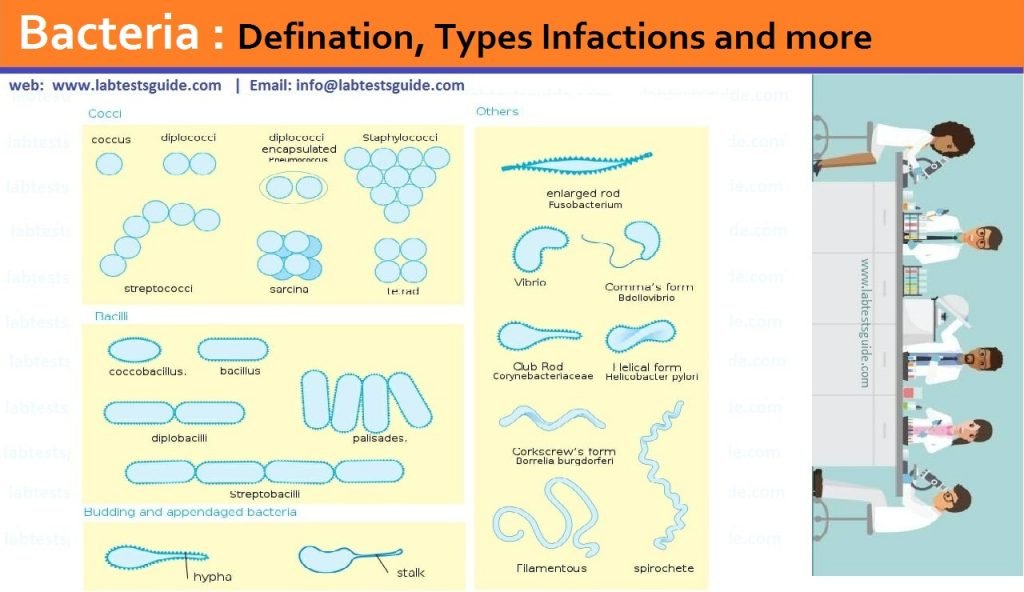
Bacteria are microscopic, single-celled organisms that thrive in diverse environments. These organisms can live in soil, the ocean and inside the human gut.

Humans’ relationship with bacteria is complex. Sometimes bacteria lend us a helping hand, such as by curdling milk into yogurt or helping with our digestion. In other cases, bacteria are destructive, causing diseases like pneumonia and methicillin-resistant Staphylococcus aureus (MRSA).
Shapes of Bacteria:
The three main shapes of bacteria are coccus, spiral, and bacillus.

- Cocci are bacteria that are spherical or ovoid in shape. Some cocci remain attached after binary fission, even though separate cells have been formed. For example, diplococci are cocci in pairs, streptococci are chains, and staphylococci are clusters of multiple cocci. Tetrads are square arrangements of four cocci, while sarcinae are cubes of eight cocci.
- Spiral bacteria are, as the name suggests, spiral-shaped. Spirillums are thick, tough spirals. Spirochetes are spirals that are thin and flexible. Vibrios are comma-shaped rods with a small twist.
- Bacilli are rod-shaped bacteria. Like cocci, bacilli can be solitary or arranged together. Diplobacilli are two bacilli arranged next to each other, and streptobacilli are chains of bacilli.
Types of Bacteria:
Many bacteria can be classified two types
- Gram Positive Bacteria which show the stain and appear violet in color under a microscope.
- Gram Negative Bacteria which only show the counter stain, and appear red color under a microscope.
Structure of bacteria:
Bacterial cells are different from plant and animal cells. Bacteria are prokaryotes, which means they have no nucleus.
A bacterial cell includes:
- Capsule: A layer found on the outside of the cell wall in some bacteria.
- Cell wall: A layer that is made of a polymer called peptidoglycan. The cell wall gives the bacteria its shape. It is located outside the plasma membrane . The cell wall is thicker in some bacteria, called Gram positive bacteria.
- Plasma membrane: Found within the cell wall, this generates energy and transports chemicals. The membrane is permeable, which means that substances can pass through it.
- Cytoplasm: A gelatinous substance inside the plasma membrane that contains genetic material and ribosomes.
- DNA: This contains all the genetic instructions used in the development and function of the bacterium. It is located inside the cytoplasm.
- Ribosomes: This is where proteins are made, or synthesized. Ribosomes are complex particles made up of RNA-rich granules.
- Flagellum: This is used for movement, to propel some types of bacteria. There are some bacteria that can have more than one.
- Pili: These hair-like appendages on the outside of the cell allow it to stick to surfaces and transfer genetic material to other cells. This can contribute to the spread of illness in humans.
Hazards
Some types of bacteria can cause diseases in humans, such as cholera, diptheria, dysentery, bubonic plague, pneumonia, tuberculosis (TB), typhoid, and many more.
Related Articles:
RELATED POSTS
View all
